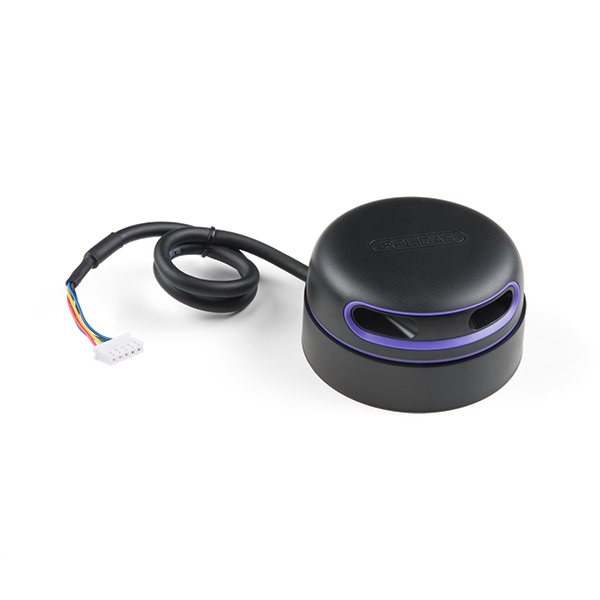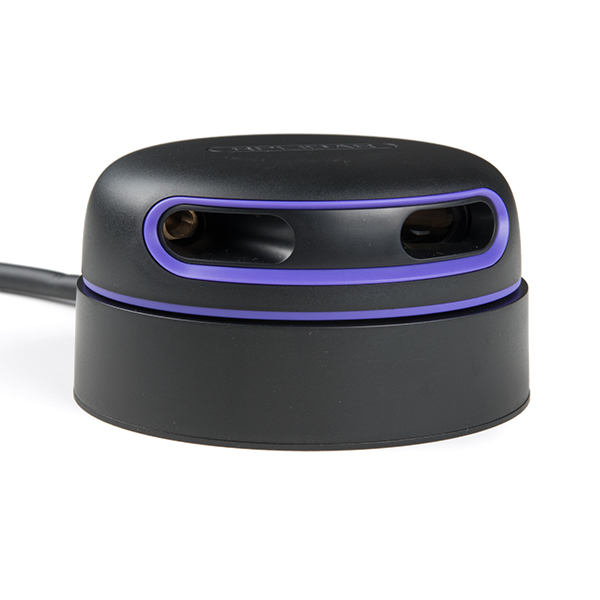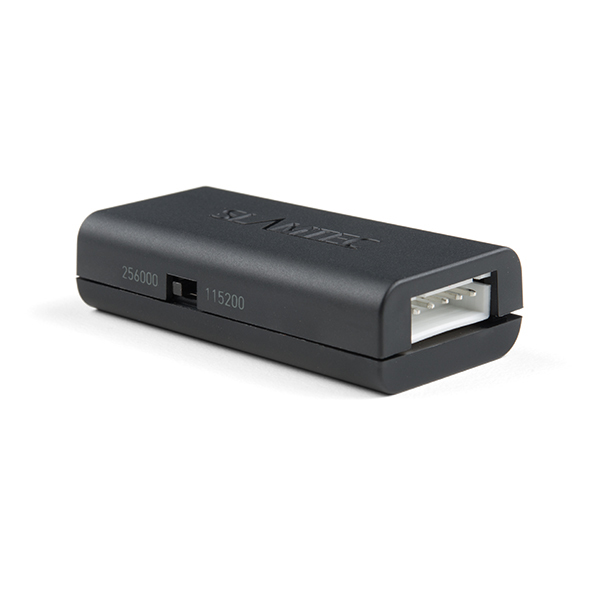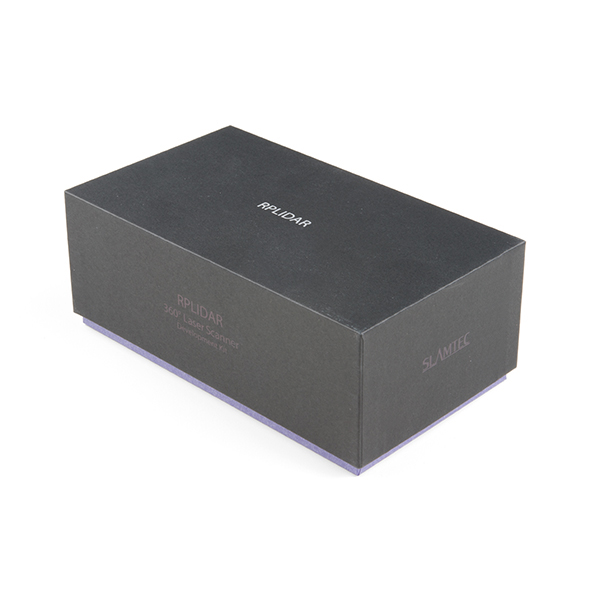RPLIDAR A3M1 360° Laser Range Scanner
The RPLIDAR A3M1 is the next generation of 360 degree 2D LIDARs. Each RPLIDAR A3 can take up to 16000 samples of laser ranging per second thanks to its high rotation speed. The on-board system can perform 2D 360° scans within a range of 25 meters in enhanced mode and 20 meters in outdoor mode. Additionally, the generated 2D point cloud data can be used in mapping, localization, and object/environment modeling!
The RPLIDAR A3M1 consists of a long range scanner core and mechanical powering parts which makes the core rotate at a high speed. When it functions normally, the scanner will rotate and scan clockwise allowing you to be able to get the range scan data via the communication interface of the RPLIDAR and control the start, stop and rotating speed of the rotation motor via PWM. The typical scanning frequency of the RPLIDAR A3 360° Laser Scanner is 10hz (600rpm) with a scanning frequency that can be freely adjusted within the 5-20Hz range according to the requirements of what you need.
What makes the A3M1 special is its ability to switch between two different modes of operation (mentioned earlier): enhanced mode and outdoor mode. In enhanced mode, the RPLIDAR works within the maximum ranging radius and sampling rate to for optimum mapping performance in indoor environments. While in the outdoor mode, the RPLIDAR A3M1 works with a more reliable resistance to daylight interference, which prevents it from being “blinded” in outdoor environments.
Thanks to the improvements in SLAMTEC hardware operating performance and related algorithm, RPLIDAR A3M1 works well in all kinds of indoor environment and outdoor environment with direct sunlight. Also, before leaving the factory, every RPLIDAR A3 has passed strict testing to ensure the laser output power meet the eye safety standards of IEC-60825 Class I.
- 1x RPLIDAR A3M1
- 1x USB Adapter
- 1x micro-USB Cable
- 1x Power Adapter
- Max Distance Range:
- Enhanced Mode: 25m
- Outdoor Mode: 20m
- Angular Resolution:
- Enhanced Mode: 0.3375°
- Outdoor Mode: 0.54°
- Sample Rate:
- Enhanced Mode: 16000 per second
- Outdoor Mode: 10000 per second
- Scan Rate Typical Value: 15 Hz (adjustable between 5Hz-20Hz)
- Communication Speed: 256000bps
- Communication Interface: TTL UART
RPLIDAR A3M1 360° Laser Range Scanner Product Help and Resources
Core Skill: Programming
If a board needs code or communicates somehow, you're going to need to know how to program or interface with it. The programming skill is all about communication and code.
Skill Level: Competent - The toolchain for programming is a bit more complex and will examples may not be explicitly provided for you. You will be required to have a fundamental knowledge of programming and be required to provide your own code. You may need to modify existing libraries or code to work with your specific hardware. Sensor and hardware interfaces will be SPI or I2C.
See all skill levels
Core Skill: Electrical Prototyping
If it requires power, you need to know how much, what all the pins do, and how to hook it up. You may need to reference datasheets, schematics, and know the ins and outs of electronics.
Skill Level: Competent - You will be required to reference a datasheet or schematic to know how to use a component. Your knowledge of a datasheet will only require basic features like power requirements, pinouts, or communications type. Also, you may need a power supply that?s greater than 12V or more than 1A worth of current.
See all skill levels
Comments
Looking for answers to technical questions?
We welcome your comments and suggestions below. However, if you are looking for solutions to technical questions please see our Technical Assistance page.
Customer Reviews
4.7 out of 5
Based on 3 ratings:
RPLIDAR
Documentation a bit sketchy, download tricky. Capture program does only one capture despite documentation. Results good both day and night.
Quiet, Accurate, and reasonable SDK. But check the power.
Didn't work at first because my NUC USB ports couldn't supply enough power. Switched to a powered external USB hub and it came right up. Using it on ROS in Ubuntu 18.04. Super fast results, exactly as I expected.
Note that it doesn't "turn on" when you plug it in or anything. No indication it works at all except for a green LED on the USB adapter which doesn't mean it's working. It's not DOA. It just needs commands.







I’d like to encase this in order to avoid theft or vandalism. Is there a plastic or glass material I could use that would still allow it to function in outdoor mode?
You would need something that passes IR light (775-795 nm) from the laser. Additionally, you would probably want to account for any optical distortion as well.